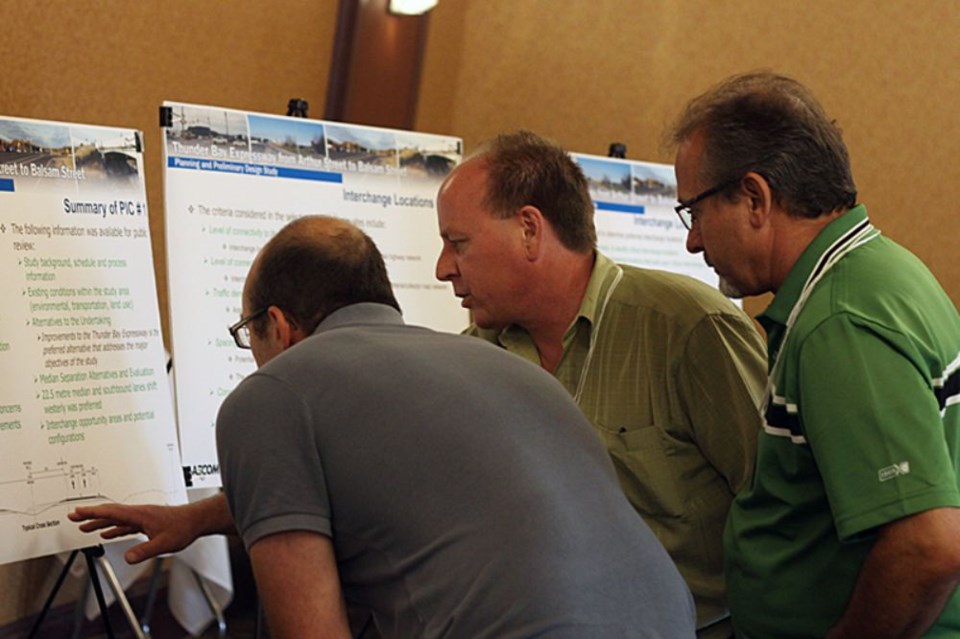THUNDER BAY – Though many don’t believe it will happen anytime soon, members of the public had their first opportunity to learn about possible changes to the Thunder Bay Expressway.
Dozens of people attended an informal drop-in open house at the Airlane Hotel on Tuesday, where Ministry of Transportation officials were on hand to answer questions and explain early stages of a plan that would convert intersections along the highway to interchanges.
The preliminary plans include a divided four-lane highway spanning 13.3 kilometres from the Arthur Street intersection until the Balsam Street intersection. It would feature partial clover leafs at the Red River Road and Balsam Street intersections, as well as a possible freeway-to-freeway interchange at the Harbour Expressway.
The plan also calls for an overpass with no exit at John Street and at Oliver Road an overpass with only a southeast entrance ramp onto for access to the Thunder Bay Regional Health Sciences Centre.
A new Northwest Arterial Route would be constructed to connect Oliver Road and John Street with a partial cloverleaf and roundabout.
But some, like Richard Diem, aren’t holding their breath.
“I would say in probably 10 to 15 years,” he said. “The Ontario government is a little short of cash so it may be a while.”
Rick Inman, a senior project manager with the Ministry of Transportation, said comments and concerns brought forward will be taken to the next step of the project.
“We’re going to look at the public input we’re receiving tonight and we’re going to look at that and refine our preferred plan that’s coming ahead in the evaluation,” Inman said.
“Then we’re going to move forward with refining the plan with a higher level of detail so we can see the impacts, come up with mitigation measures and then once we’re done that we can show it to the public.”
Discussions about giving the Expressway a facelift date back about 20 years to the 1990s, when very preliminary studies were conducted.
Part of this new process is finishing where those left off and bring the work to a point where timelines and cost estimates can be considered.
“The intent of this study is to complete those studies and have a recommended plan at the end of the study, I’m hoping in the spring of next year. Then we’ll secure environmental approvals for that plan and whatever property for those approvals is protected,” Inman said.
“At that point we’ll be ready to go in the event there is a funding commitment, which at that point we’ll move to detailed design which will be a lengthy process and take a couple of years in itself.”
Diem, who lives relatively close to the Expressway and Red River Road intersection, said something has to be done to control traffic volumes during peak hours.
In addition to cost and when, if ever, work would begin, many residents in attendance had questions about levels of access at each intersection as well as impacts to property in the vicinity of the proposed construction.
Considering the magnitude of the proposed project, Inman was not surprised to see such a strong community reaction.
“We anticipated there would be quite a bit of interest. We did advanced mail outs to pique the public’s interest early and I think that’s worked out quite well based on how many people I see here,” he said.
